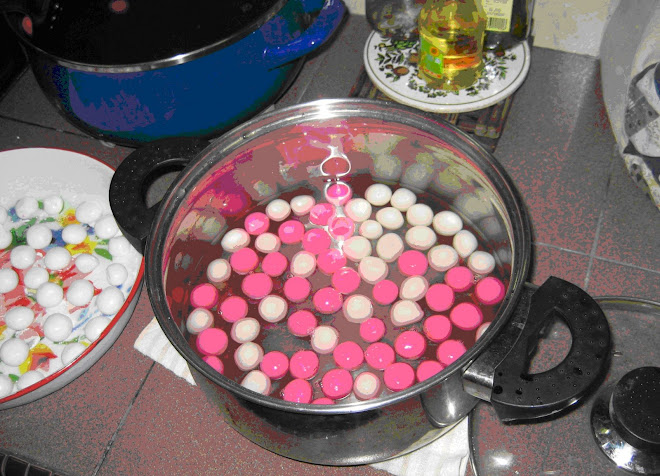We get double rainbows around these parts
For the first time, I properly learned about seasons and had first-hand experience of its rhythms. The winding up of summer was met with relief for our Brisbane summer had been a hot, humid and very wet one. The vestiges of renovations in the height of summer and open houses during monsoonal downpours were a thing of the past. We arrived in the Apple Isle during autumn when most of the small orchard was bare so we couldn’t identify most of the fruit trees. Autumn gave us lots and lots of leaf litter, some fabulous evening skies, interesting fungi and a glimpse into what winter might be like.
A striking find in the paddock: Aleuria Aurantia or Orange Peel Fungus
All winter long, the wood heater got a vigorous workout while we waited eagerly to see what would burst forth from the orchard. Our neighbours plied us with their delightful nashi pears and quinces. For weeks we had poached quinces with porridge, used them as toppings for tarts and flans, and the leftover quinces turned into jelly. I will never forget the perfume of quinces ripening in the pantry, filling the entire house with their distinct aromas. Just as we thought winter would never end, Spring arrived - late, and with lots of rain.
The spike in temperature saw the almonds racing ahead first with flowers, the plums weren’t far behind with their glorious white and pink blossoms. The orchard turned into a veritable confetti wonderland. The cherries came second with their own beautiful blossoms. I imagine this is what Japan is like at cherry blossom time! Apples took their time with their own intensely pink pretty flowers. The orchard buzzed with hundreds of bees, insects and birds.
Just as Summer woke from its long slumber, the noisy swamp hens packed up and left, so did the wild ducks, herons and eagles, they’ve all raised their young and flown the coop. All that’s left are broken shells at the bottom of trees – evidence of a family made. Just as we thought the birds had abandoned us, tribes of honey warblers, wrens, finches, swallows and other tiny birds moved in. I've recently discovered the joys of bird watching. Summer’s bounty of fruit saw my first batches of cherry and plum jams. I frequented op shops and bought as many jars and bottles as I could find. Lots of pies, tarts and cakes were eaten during the course of our first year. I learned to make bread and bagels and all sorts of baked goodies. Wet, cold dreary days will force you indoors and cooking I assure you! Now I have to turn my attention to crab apples and blackberries. The op shops await.
Cherries, raspberries, red currants from the garden Blackberries galore!
Weekends of leisurely newspaper and lifestyle magazine reading have given way to scouring the Ag and farming newspapers for clearing sales and auctions. Advertisements for bargain second hand tractors and its accoutrements excite us. Is it hydrostatic or manual? Has it got 4WD? Come with ag wheels, four-in-one buckets, slashers and post-hole digger? Bonus. Yes, if you thought my Blundstones were daggy, gum boots are now de rigueur in my shoe collection.
In the course of the year: old oyster middens have been uncovered by king tides and wild winds, majestic eucalypts, pines and stringybarks felled, five garden beds constructed, fencing built, gullies of blackberries slashed, neglected fruit trees released from the onslaught of bramble, wild weeds and mushrooms foraged, tonnes of firewood cut and collected, and our biggest investment so far, a ride-on mower!
I had no expectations of country living a year ago. Given that I had never lived on property or anywhere far from cities, how could I know what it would be like? Living on a bit of land demands time - every free, available spare moment is filled with 'doing'. There never seems to be enough hours in the day to do everything we want to do. Something is always demanding attention – the rabbit holes need filling up, the compost needs turning, the worms need feeding, gardens need watering, paddocks need slashing, blackberries need more cutting and controlling and the trees need pruning. Work aside, living in the country has its peaks and troughs – mostly it is uplifting – the spatial freedom is wonderful. There's something special about Tasmania’s clean air and water and every measure to protect its natural assets is to be commended and encouraged. There is something magnificent and special about being able to walk down to the ocean in search of solitude, a spot of fishing, a beachcomb or forage. With this privilege comes a certain responsibility for the guardianship of our land and sea. The most profound thing so far this year, is the realisation that I don’t want to live in a city anytime soon.



























